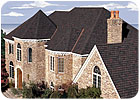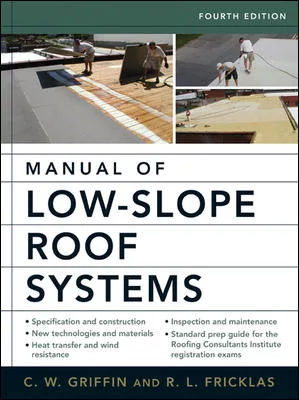Attachment of Asphalt Shingles in High-Velocity Wind Zones
The recent increase in storm frequency - particularly in high-velocity winds - throughout the United States is prompting changes in the roofing industry. Attachment procedures for all roof systems, both steep slope and low slope, are being scrutinized, and code changes are imminent.

The recent increase in storm frequency - particularly in high-velocity winds - throughout the United States is prompting changes in the roofing industry. Attachment procedures for all roof systems, both steep slope and low slope, are being scrutinized, and code changes are imminent. Stringent building codes and tightened regulations were enacted in South Florida after Hurricane Andrew in 1992. The result of the recent surge of storms in Florida and the Gulf Coast the last two years and the devastation that they produced will likely mean more code changes for high-wind performance.
Some codes have already been altered to reflect the need for increased attachment methods. In 2004, the International Building Code enacted new high-wind performance standards for asphalt shingles. The standards, published in the 2004 IBC Supplement, provide attachment criteria for asphalt shingles in high-velocity wind zones that reach up to 150 mph. The new asphalt shingle standards are based ANSI/UL2390-04, "Test Method for the Wind Resistance of Asphalt Shingles with Sealed Tabs," and ASTM D6381, "Measurement of Asphalt Shingle Mechanical Uplift Resistance." Adoption of these standards was reached through the promotion of the Asphalt Roofing Manufacturers Association (ARMA), which spent nearly fifteen years assisting code officials, wind engineers and insurance companies with research and development of new test methods for asphalt shingle performance in high-wind situations.
The primary advantage of the code adoption is that designers, contractors, homeowners and other building owners now have standards for proper asphalt shingle selection in high-velocity wind zones. It also provides code enforcement officials with guidelines for enforcement of material selection and application methods. Until this time, many code officials would not allow the use of asphalt shingles in high-velocity wind zones due to the fact that there were no wind-uplift resistance standards.

On remedial applications, the existing decking should be inspected to verify that the proper nailing pattern of the deck to the trusses or rafters is followed. If the existing nailing pattern is inadequate, then the addition of nails to meet the current requirements should be completed. Proper attachment of deck panels near roof edges and ridges is critical because these areas are the most vulnerable to damage, as wind forces are the highest at these locations.
Most of the damage that occurs from high-velocity winds on steep-slope shingle systems involves loss of shingles or other roof covering components. In a majority of cases, damage is localized and it rarely results in structural damage. The major losses typically occur from moisture infiltration into the interior spaces, which results in damage to drywall, carpeting and furnishings. The interior damage can be limited - or prevented altogether - if a secure underlayment is applied between the structural decking and shingle coverings. Steep slope underlayments are typically 15 pound or 30 pound fiberglass felts. The underlayment should be secured to the decking with capped-head nails or with metal disks applied under the roofing nails to improve the water resistance capabilities of the underlayment. The fastening pattern should be determined using Factory Mutual or ASCE standard wind-uplift calculations, which determine the wind uplift pressure rating on specific building. The wind-uplift calculation takes into account the basic wind speed in the geographical area, the ground surrounding the building and the roof uplift pressure at the field of the roof. The building's height and perimeter construction are also considered. The calculation determines the proper number of fasteners required for the underlayment at the perimeters, corners and field of the roof.
A good recommendation may be to apply the underlayment in a two-ply (full half lap) configuration or apply 75 pound underlayments to further guard against moisture infiltration in the event of shingle displacement.
The nails applied at the starter strip should be a maximum of 1/2 inch from the edge of the sheathing. At the ridges, one nail should be placed on each side of the shingle between the sealant and the exposed part of the shingle, 1 inch from the edge.
Additional attachment methods are required at the roof areas most vulnerable to wind forces. Place three dabs of roof cement, each approximately 1-inch in diameter, at each shingle tab to increase attachment at the starter strip and first course of shingles. A minimum of two dabs of roof cement - 1 inch in diameter - is required at shingles located at rakes, hips and ridges. Two dabs of roof cement should also be applied at the last full and partial shingle tabs located at valleys.
While there is no practical method of providing a totally hurricane-proof roof, the intent of the new code standards is to reduce roof damage and the subsequent interior damage that occurs from high-velocity winds.

The recent increase in storm frequency - particularly in high-velocity winds - throughout the United States is prompting changes in the roofing industry. Attachment procedures for all roof systems, both steep slope and low slope, are being scrutinized, and code changes are imminent. Stringent building codes and tightened regulations were enacted in South Florida after Hurricane Andrew in 1992. The result of the recent surge of storms in Florida and the Gulf Coast the last two years and the devastation that they produced will likely mean more code changes for high-wind performance.
Some codes have already been altered to reflect the need for increased attachment methods. In 2004, the International Building Code enacted new high-wind performance standards for asphalt shingles. The standards, published in the 2004 IBC Supplement, provide attachment criteria for asphalt shingles in high-velocity wind zones that reach up to 150 mph. The new asphalt shingle standards are based ANSI/UL2390-04, "Test Method for the Wind Resistance of Asphalt Shingles with Sealed Tabs," and ASTM D6381, "Measurement of Asphalt Shingle Mechanical Uplift Resistance." Adoption of these standards was reached through the promotion of the Asphalt Roofing Manufacturers Association (ARMA), which spent nearly fifteen years assisting code officials, wind engineers and insurance companies with research and development of new test methods for asphalt shingle performance in high-wind situations.
The primary advantage of the code adoption is that designers, contractors, homeowners and other building owners now have standards for proper asphalt shingle selection in high-velocity wind zones. It also provides code enforcement officials with guidelines for enforcement of material selection and application methods. Until this time, many code officials would not allow the use of asphalt shingles in high-velocity wind zones due to the fact that there were no wind-uplift resistance standards.

Attachment Guidelines
The roof deck sheathing should be manufactured of structural plywood or OSB board in the nominal thickness range of 7/16 of an inch to 5/8 of an inch. Nails should be used to secure the decking to the structural trusses. Acceptable nails for this securement procedure are 8d common nails (0.131 inches by 21/2 inches long), 10d box nails (0.128 inches by 3 inches long) or power-driven nails (0.113 inches by 23/8 inches long). If the trusses are spaced 16 inches on center or less, then the decking should be fastened at a minimum rate of 6 inches on center. If the trusses are spaced 24 inches on center, then the decking should be fastened at a minimum rate of 4 inches on center. Truss spacing should be in compliance with local code requirements.On remedial applications, the existing decking should be inspected to verify that the proper nailing pattern of the deck to the trusses or rafters is followed. If the existing nailing pattern is inadequate, then the addition of nails to meet the current requirements should be completed. Proper attachment of deck panels near roof edges and ridges is critical because these areas are the most vulnerable to damage, as wind forces are the highest at these locations.
Most of the damage that occurs from high-velocity winds on steep-slope shingle systems involves loss of shingles or other roof covering components. In a majority of cases, damage is localized and it rarely results in structural damage. The major losses typically occur from moisture infiltration into the interior spaces, which results in damage to drywall, carpeting and furnishings. The interior damage can be limited - or prevented altogether - if a secure underlayment is applied between the structural decking and shingle coverings. Steep slope underlayments are typically 15 pound or 30 pound fiberglass felts. The underlayment should be secured to the decking with capped-head nails or with metal disks applied under the roofing nails to improve the water resistance capabilities of the underlayment. The fastening pattern should be determined using Factory Mutual or ASCE standard wind-uplift calculations, which determine the wind uplift pressure rating on specific building. The wind-uplift calculation takes into account the basic wind speed in the geographical area, the ground surrounding the building and the roof uplift pressure at the field of the roof. The building's height and perimeter construction are also considered. The calculation determines the proper number of fasteners required for the underlayment at the perimeters, corners and field of the roof.
A good recommendation may be to apply the underlayment in a two-ply (full half lap) configuration or apply 75 pound underlayments to further guard against moisture infiltration in the event of shingle displacement.
Application Methods
The most prominent change that the code enacts is for shingle application methods. The code addresses application methods at the most critical points of steep-slope applications - shingle attachment in the field of the roof and at areas that are most vulnerable to wind damage, such as at ridges, eaves, hips and rakes. Shingle application should be completed by applying a six-nail pattern - not the traditional four nails - at each shingle. On three-tab shingles, the nails should be placed just below the self-sealing tar line and within the nailing zone provided on dimensional shingles. The shingles must be secured with approved nails such as 1 1/4-inch No. 12 wire gage shank nails with a 3/4-inch diameter head.The nails applied at the starter strip should be a maximum of 1/2 inch from the edge of the sheathing. At the ridges, one nail should be placed on each side of the shingle between the sealant and the exposed part of the shingle, 1 inch from the edge.
Additional attachment methods are required at the roof areas most vulnerable to wind forces. Place three dabs of roof cement, each approximately 1-inch in diameter, at each shingle tab to increase attachment at the starter strip and first course of shingles. A minimum of two dabs of roof cement - 1 inch in diameter - is required at shingles located at rakes, hips and ridges. Two dabs of roof cement should also be applied at the last full and partial shingle tabs located at valleys.
While there is no practical method of providing a totally hurricane-proof roof, the intent of the new code standards is to reduce roof damage and the subsequent interior damage that occurs from high-velocity winds.
Looking for a reprint of this article?
From high-res PDFs to custom plaques, order your copy today!





